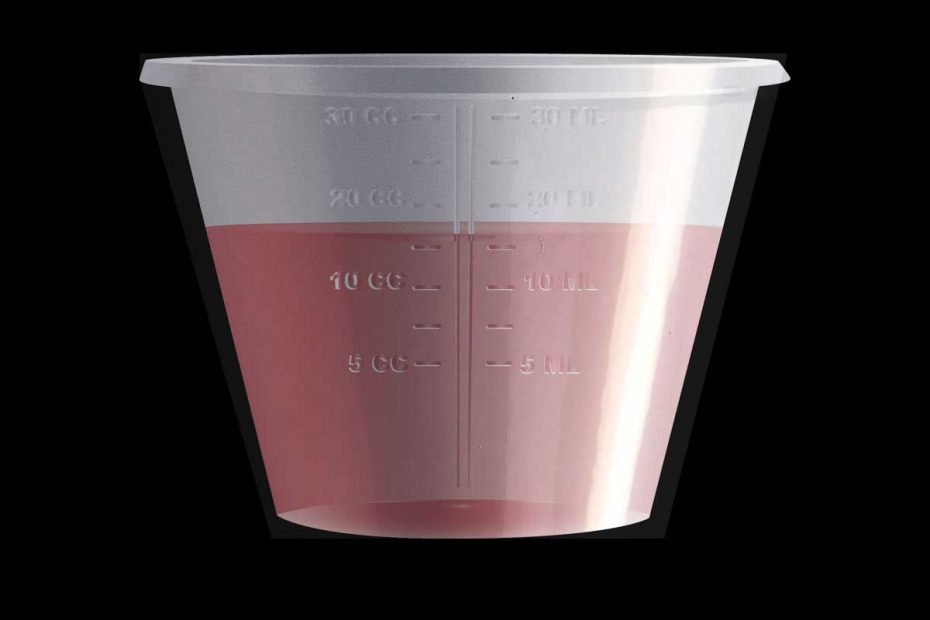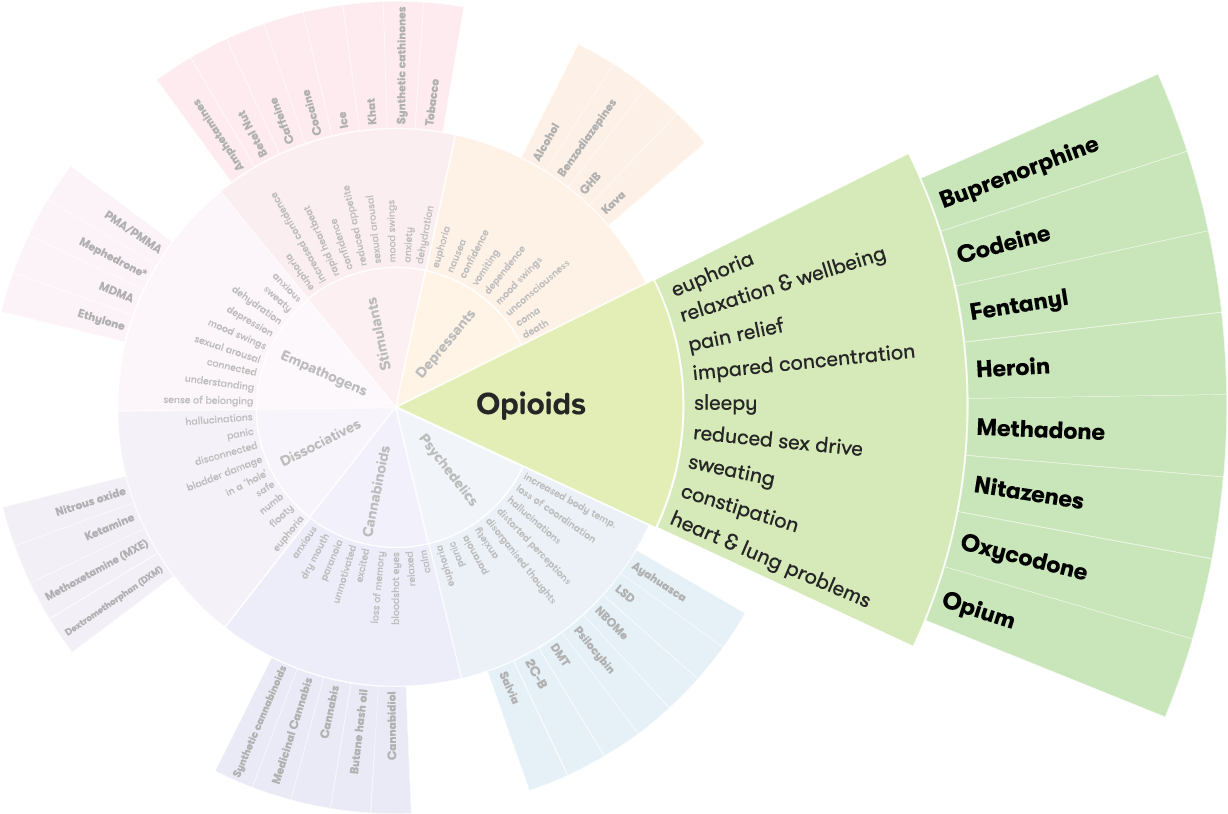How is it used?
In Australia, two formulations are available for methadone maintenance treatment:
- Methadone Syrup®: This formulation contains 5 mg/ml methadone hydrochloride, sorbitol, glycerol, ethanol (4.75%), caramel, flavouring, and sodium benzoate..
- Biodone Forte®: This formulation contains 5mg/ml methadone hydrochloride and permicol-red colouring.3
Generally, there are two types of methadone programs:
- Maintenance (long-term programs): May last for months or years, and aims to reduce the harms associated with drug use and improve quality of life.
Withdrawal (short-term detoxification programs): Runs for approximately 5-14 days and aims to ease the discomfort of stopping heroin use.4 For pain relief, methadone is administered through an injection or tablets.
How effective is it?
Methadone treatment is more likely to be successful if it’s part of a comprehensive treatment program, which addresses the body, mind and environment in which heroin has been used.
For example, treatment may include a combination of methadone, counselling, alternative therapies, a positive support network of peers and friends and a support group.4
Methadone maintenance may not work for everyone, so it’s important to consult a doctor or drug counsellor to find the best approach.
Advantages of methadone maintenance over heroin use
- Using methadone on its own is unlikely to result in an overdose.
- Methadone maintenance keeps the person stable while they make positive changes in their life.
- Health problems are reduced or avoided, especially those related to injecting, such as HIV, hepatitis B and hepatitis C viruses, skin infections and vein problems.
- Doses are required only once a day, sometimes even less often, because methadone’s effects are long lasting.
- Methadone is much cheaper than heroin.5
Effects of methadone
Use of any drug can have risks. It’s important to be careful when taking any type of drug, even medications can produce unwanted side effects. It’s important to be careful when taking any type of drug.
Methadone affects everyone differently, based on:
- size, weight and health
- whether the person is used to taking it
- whether other drugs are taken around the same time
- the amount taken
The effects of methadone last much longer than the effects of heroin. A single dose lasts about 24 hours, whereas a dose of heroin may only last a couple of hours.6
People with pre-existing impaired liver function (due to conditions such as hepatitis B, hepatitis C or prolonged alcohol use) may require careful monitoring while receiving methadone treatment.7
Side effects
The most common side effects of methadone are:
- sweating (drink at least two litres of water each day to prevent dehydration)
- difficulty passing urine
- loss of appetite, nausea and vomiting
- abdominal cramps
- constipation
- aching muscles and joints
- irregular periods
- low sex drive in males
- rashes and itching
- lethargy, mental clouding and confusion1,7
Dose-related effects
Some people on methadone programs will experience unwanted symptoms during treatment, particularly at the beginning due to their dosage not being right for them.7
If the dose is too low, the following symptoms may be experienced:
- runny nose
- yawning
- high temperature but feeling cold and sweating with goosebumps
- irritability and aggression
- loss of appetite, nausea and vomiting
- abdominal cramps and diarrhoea
- tremors muscle spasms and jerking
- back and joint aches
- cravings for the drug they were dependant on.1
Overdose
If the dose is too high, the following symptoms may be experienced. Call an ambulance straight away by dialling triple zero (000) if you or someone else has any of these symptoms (ambulance officers don’t need to involve the police):
- low, shallow breathing
- slack muscles
- occasional seizures
- drowsiness or unconsciousness
- cold, clammy skin with blueish colour
- coma
Long-term effects
Methadone in its pure form won’t damage major organs8 and its prolonged use won’t cause any physical damage.8
Withdrawal
Methadone withdrawal develops more slowly and is less intense than withdrawal from heroin. Withdrawal symptoms are similar to those listed under ‘Dose-related effects’ under ‘too low’ dose. Most of these effects will begin within one to three days after the last dose and will peak around the sixth day, but can last longer.1
Getting help
If your use of methadone is affecting your health, family, relationships, work, school, financial or other life situations, or you’re concerned about a loved one, you can find help and support.
Call the National Alcohol and Other Drug Hotline on 1800 250 015 for free and confidential advice, information and counselling about alcohol and other drugs
Help and Support Services search
Find a service in your local area from our list. Simply add your location or postcode and filter by service type to quickly discover help near you.
If you're looking for other information or support options, send us an email at druginfo@adf.org.au
Path2Help
Not sure what you are looking for? Try our intuitive Path2Help tool and be matched with support information and services tailored to you.
Find out more
Methadone is a Schedule 8 drug, which means it’s a controlled drug.
It is illegal to:
- use methadone without a prescription from a doctor
- sell or give a methadone prescription to someone else
- forge or alter a methadone prescription
- make false claims to obtain methadone or a methadone prescription from a health professional
- inject methadone.9
In 2020, 53,316 clients received opioid pharmacotherapy treatment from authorised prescribers.
Methadone was the most commonly prescribed pharmacotherapy type across most age groups.10
- Upfal J. The Australian drug guide. 7th ed. Melbourne Black Inc.; 2006.
- Brands B et al. Drugs & Drug Abuse. 3rd ed. Ontario: Addiction Research Foundation; 1998.
- McDonough M.Opioid treatment of opioid addiction 2013 [14.05.2021].
- Kleber H. Pharmacologic treatments for opioid dependence: detoxification and maintenance options. Dialogues in Clinical Neuroscience. 2007;9(4).
- Rankin J Mattick R. Review of the effectiveness of Methadone maintenance treatment and analysis of St Mary's Clinic, Sydney. National Drug and Alcohol Research Centre 1997.
- NSW Health. Methadone 2015 [14.05.2021].
- Henry-Edwards S. Clinical guidelines and procedures for the use of methadonein the maintenance treatment of opioid dependence. 2003.
- Australian Government Department of Health. Methadone Clinical pharmacology 2003 [14.05.2021].
- Australian Government. Federal Register of Legislation The Poisons Standard 2021.
- Australian Institute of Health and Welfare. National Opioid Pharmacotherapy Statistics Annual Data collection 2019. Canberra 2020.

